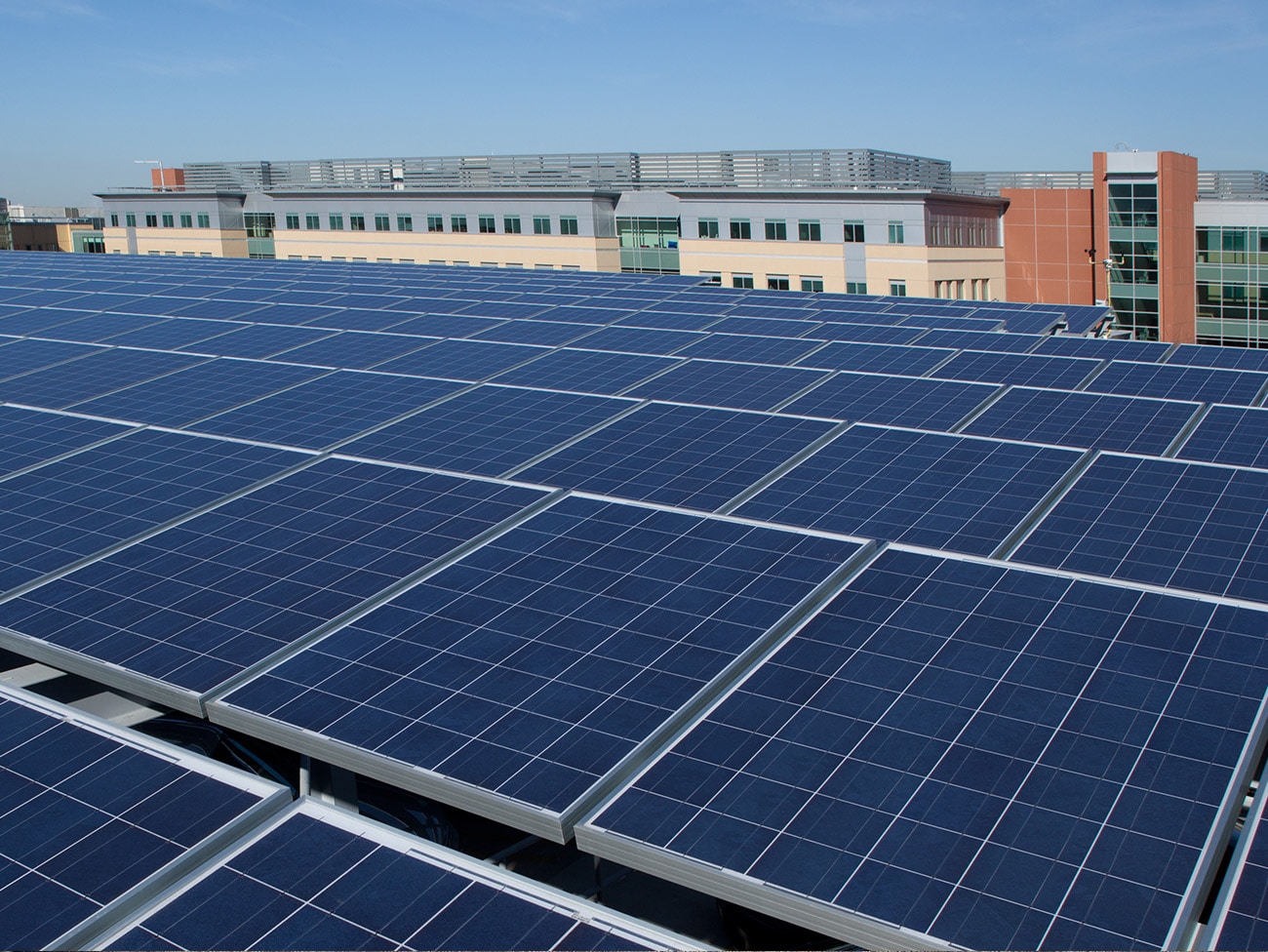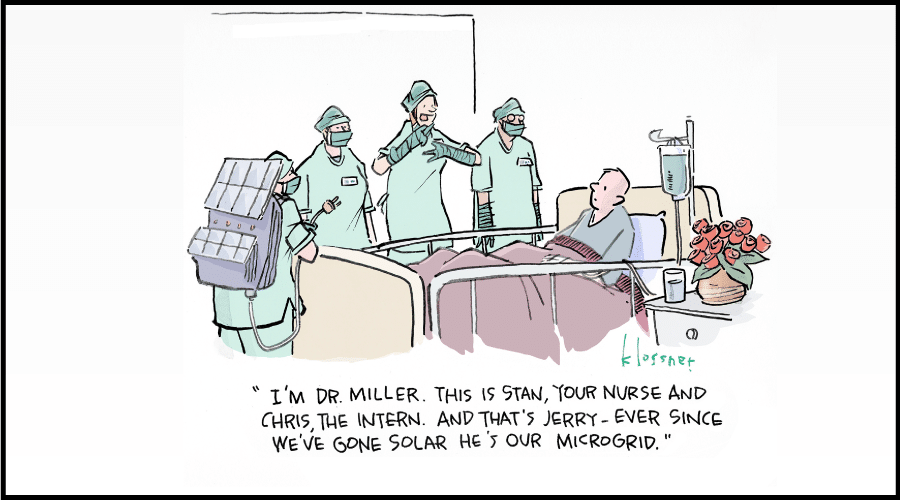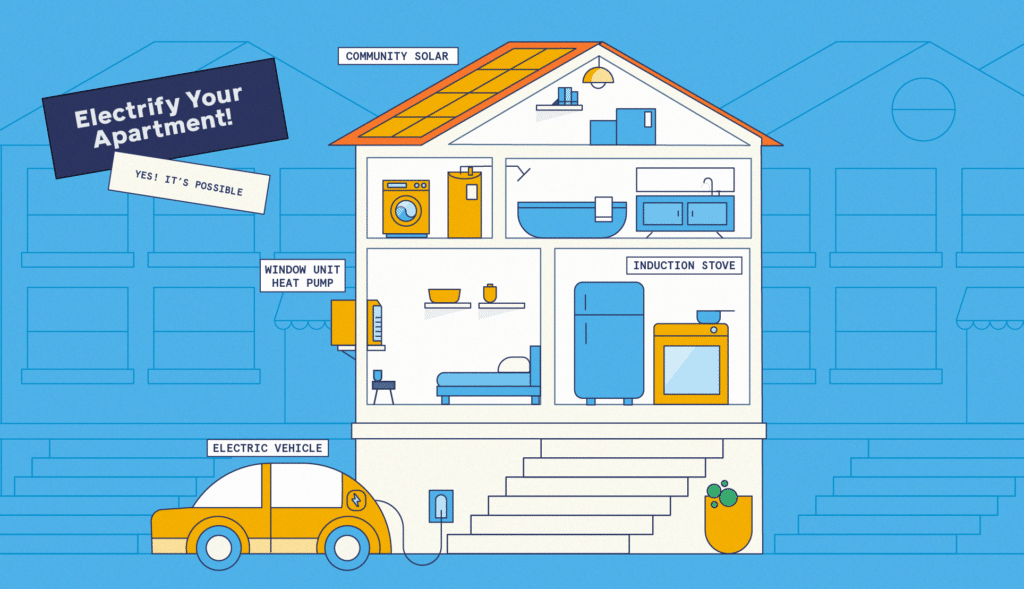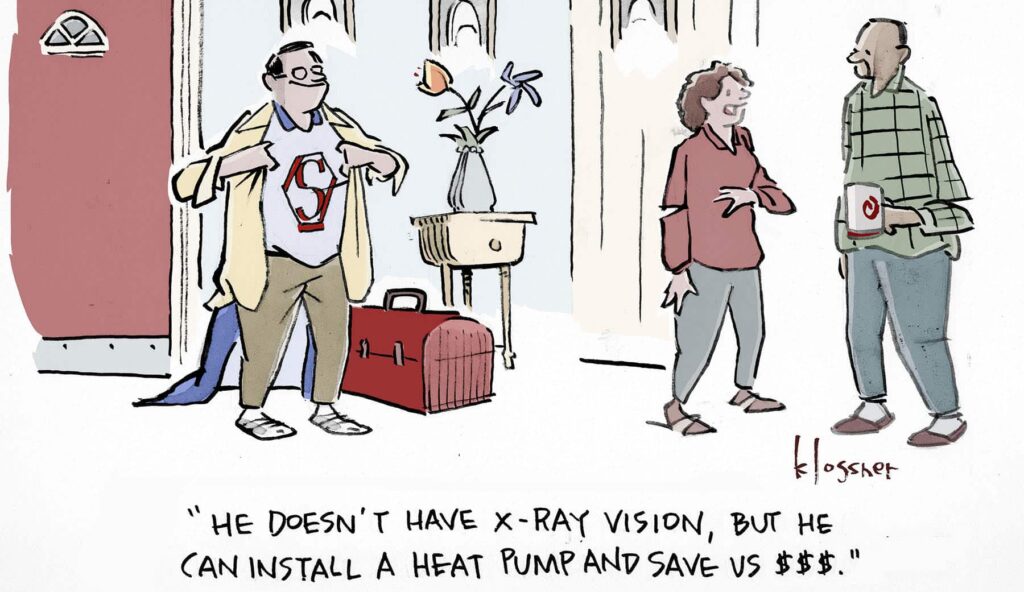It may not surprise you to learn that the healthcare sector is one of the largest carbon emitters in the country. It accounts for 10% of the nation’s carbon emissions and 9% of the nation’s non-greenhouse air pollutants that harm health. And that’s ironic for community assets focused on health. More frequent and intense climate-related disasters threaten the ability of hospitals, in particular, to take care of their patients.
We don’t have to look to the future to imagine what those threats would look like. Several hospitals across the country and U.S. territories have already lived through dire situations during wildfires and hurricanes in places such as California, Louisiana, and Puerto Rico.
Some hospitals had to evacuate. Other healthcare workers had to pump ventilators by hand to keep their patients alive. During Hurricane Maria, blocked roads prevented doctors and people who needed care from getting to hospitals. If it was difficult for doctors to get to hospitals, you can imagine that transporting diesel in the middle of a crisis would also be tough, expensive and unsafe. These disasters underscore the risks of relying on fossil-fuel backup generators and the need to increase the energy resilience of hospitals.
These disasters underscore the risks of relying on fossil-fuel backup generators and the need to increase the energy resilience of hospitals.
Renewables = Resilience
But it doesn’t have to be this way. Health care systems can bear the brunt better by enhancing their resilience with solar power and large capacity battery storage. (In case you missed it, we wrote about the promise of battery storage earlier this year).
More and more hospital administrators recognize the big role hospitals could play in reducing emissions. With solar power, hospitals reduce their direct emissions generated by fossil fuels – and the social cost of carbon along with it. “Eliminating our carbon footprint is one of the most effective ways we can contribute to a healthier environment and improve conditions for health and equity,” said Yvette Radford, vice president of External and Community Affairs at Kaiser Permanente Northern California.
-

A rooftop solar panel array on a Kaiser Permanente building in Santa Clara, CA.
In 2020, Kaiser Permanente became the first health system in the United States to become carbon neutral. It achieved this goal through a combination of different investments, including in solar power. The U.S. Department of Energy noted in a 2015 report that one of the largest technical barriers for hospitals to install solar panels is insufficient roof space due to medical equipment. Kaiser worked around this challenge by installing solar panels over building garages, which created “carports” with EV-charging stations.
Hospitals have some of the largest energy demands because they run critical, high-tech equipment around the clock. According to the DOE, that means they are more vulnerable to rising fuel prices and price volatility than other commercial sectors. Investing in solar can protect against those rising or volatile prices.
The DOE also recommends improving energy efficiency before or in conjunction with investments in renewable energy. As of September 2020, Kaiser also reduced its demand for energy by 8% since 2013 by improving energy efficiency throughout its facilities. In all, renewable energy powers Kaiser for about half of its energy needs, saving the healthcare system millions of dollars.
Pairing solar with battery storage is critical to boosting resilience. Together they supply power during power outages or in the midst of natural disasters when the power grid goes down. In San Juan, Puerto Rico, for example, a children’s hospital and several fire stations continue to rely on solar panels and battery storage to run its critical equipment any time the power grid is down. These solar panels and battery storage were installed within a couple of weeks after Hurricane Maria struck the country in 2017. Solar power and battery storage allow the fire stations and children’s hospital to keep life-saving equipment powered on when it most needs it.
Solar power and battery storage allow the fire stations and children’s hospital to keep life-saving equipment powered on when it most needs it.
But would solar panels hold up during severe weather? In North Carolina, solar farms were put to the test during Hurricane Florence. They survived the hurricane’s power wind and rainfall with minimal damage. This is a significant finding in the state with the second largest capacity of solar power in the country.
As climate related disasters increase in frequency and intensity, hospitals can position themselves to save money, be more resilient and reduce emissions that threaten our collective health.















